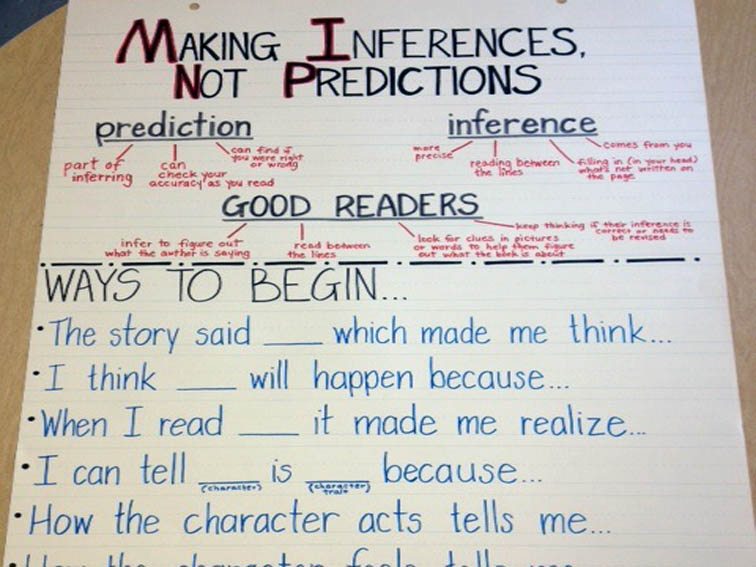What Is The Difference Between Inference & Prediction?
by TeachThought Staff
The Difference Between Inference and Prediction in Reading Comprehension
Reading comprehension depends on how students interpret what is stated and what is suggested.
Two related but distinct processes—inference and prediction—are central to this work. Though both rely on evidence and background knowledge, they serve different purposes in helping readers make meaning.
What Is a Prediction?
A prediction is a forward-looking guess that can be confirmed or disproven as the text continues. It is rooted in explicit details and patterns that suggest what might happen next.
For example, in Romeo and Juliet, a student may predict that Romeo’s impulsive actions will create conflict after the balcony scene. In The Great Gatsby, readers may predict the downfall of Gatsby’s dream once Tom confronts him in New York.
Sample teacher questions:
- “What do you think will happen next, and what in the text supports your answer?”
- “If the pattern continues, what outcome seems likely?”
What Is an Inference?
An inference is a conclusion drawn from implicit clues rather than explicit statements. Unlike predictions, inferences are not confirmed later but remain interpretations about meaning, theme, or motivation.
In Of Mice and Men, readers may infer that George knows the dream of owning land is impossible, even though he never admits this directly. In To Kill a Mockingbird, readers infer the prejudice of Maycomb’s townspeople through dialogue and courtroom behavior, not through narration.
Sample teacher questions:
- “What can you conclude from the character’s actions or dialogue?”
- “What does the author’s word choice suggest without saying directly?”
The Key Difference
The difference lies in fulfillment. A prediction anticipates an outcome that can be proven right or wrong as events unfold, while an inference interprets meaning that remains implied.
In short: predictions look ahead, inferences look beneath. Both require students to connect evidence and prior knowledge, but one asks “What will happen?” while the other asks “What does this mean?”
See also: 25 Reading Strategies That Work In Every Content Area | Close Reading Resources
References:
Duke, N. K., & Pearson, P. D. (2002). Effective practices for developing reading comprehension. In A. Farstrup & S. Samuels (Eds.), What Research Has to Say About Reading Instruction (pp. 205–242). International Reading Association.
Keene, E. O., & Zimmerman, S. (2007). Mosaic of Thought: The Power of Comprehension Strategy Instruction (2nd ed.). Heinemann.
